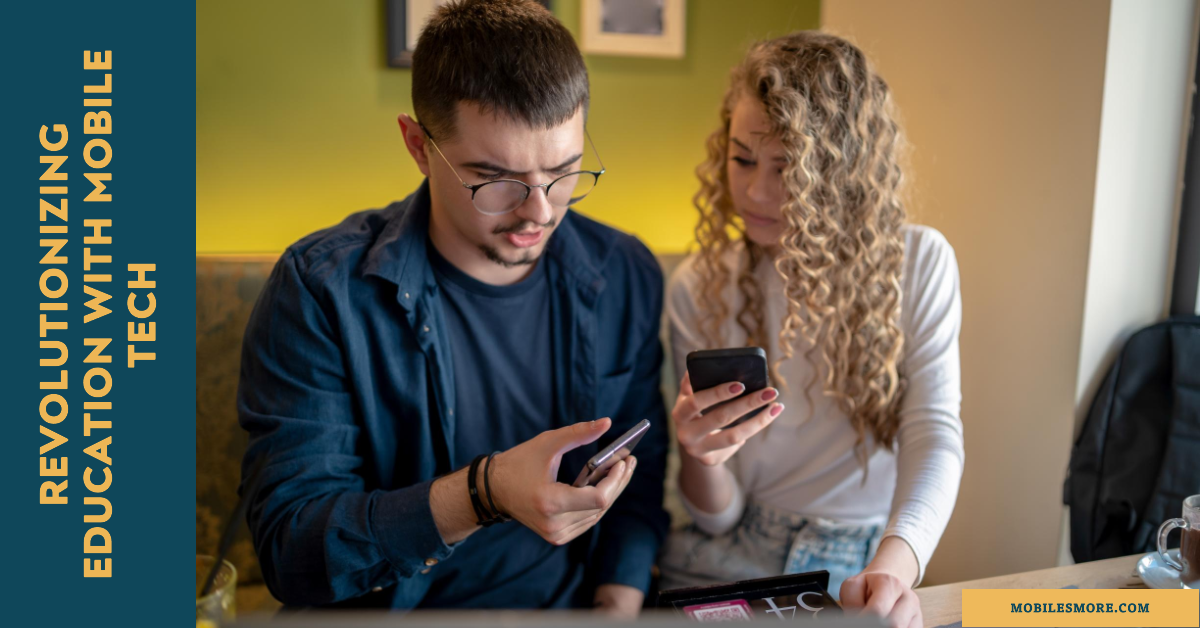Introduction
The rapid advancement of technology in recent decades has transformed every aspect of our lives, and education is no exception. Mobile technology, in particular, has emerged as a powerful tool that is reshaping the way we learn and teach. From smartphones and tablets to educational apps and online resources, mobile technology has made education more accessible, interactive, and engaging than ever before. In this blog post, we will explore the profound impact of mobile technology on education, covering the benefits, challenges, and future prospects of this digital revolution.
Mobile technology has revolutionized the way we live, work, and learn. In recent years, mobile technology has had a significant impact on education. From smartphones and tablets to laptops and e-readers, there are now more ways than ever to access educational content on the go.
One of the main benefits of mobile technology in education is that it makes learning more accessible. With mobile devices, students can access educational materials from anywhere, at any time. This means that they can study on their own schedule, whether that’s during their daily commute, on their lunch break, or while waiting for an appointment.
Mobile technology also makes it easier for students to collaborate with each other. With messaging apps, social media platforms, and video conferencing tools, students can work together on group projects and assignments, no matter where they are located. This helps to break down geographical barriers and create a more inclusive learning environment.
Another benefit of mobile technology in education is that it can help to personalize the learning experience. With adaptive learning software, students can receive personalized feedback and recommendations based on their individual learning style and progress. This helps to ensure that each student is getting the support they need to succeed.
However, mobile technology is not without its challenges. One of the main concerns is that it can be a distraction in the classroom. Students may be tempted to check their phones or browse social media instead of paying attention to the lesson. It’s important for educators to set clear guidelines and expectations for mobile device use in the classroom.
Another challenge is ensuring that all students have access to mobile technology. While many students may have their own devices, others may not be able to afford them. This can create a digital divide, where some students have access to educational resources that others do not. It’s important for educators to work to bridge this gap and ensure that all students have access to the technology they need to succeed.
Despite these challenges, the impact of mobile technology on education has been overwhelmingly positive. From making learning more accessible to creating a more personalized learning experience, mobile technology has transformed the way we think about education. As technology continues to evolve, we can expect to see even more exciting developments in the world of mobile education.
The Future of Mobile Technology in Education
As mobile technology continues to evolve, its role in education is likely to expand and evolve as well. Here are some trends and possibilities for the future of mobile technology in education:
- Artificial Intelligence (AI) and Machine Learning: AI-powered educational tools can provide even more personalized learning experiences by adapting to individual student needs. These systems can also help teachers by automating administrative tasks and providing insights into student performance.
- Augmented and Virtual Reality: AR and VR technologies have the potential to revolutionize experiential learning. As these technologies become more accessible and affordable, they can create immersive educational experiences that were previously unimaginable.
- Mobile Learning Analytics: Data analytics will play an increasingly significant role in education. Mobile technology can collect data on student interactions, engagement, and performance, helping educators make informed decisions to improve learning outcomes.
- Continued Growth of Online Learning: The trend toward online and blended learning will likely continue to grow. Mobile devices will be integral to these models, enabling students to access educational content from anywhere.
- Accessibility Improvements: Efforts to bridge the digital divide will continue, ensuring that all students have access to the technology and resources needed for effective learning.
Conclusion
Mobile technology has already had a profound impact on education, making learning more accessible, engaging, and personalized. While there are challenges to overcome, the potential for mobile technology to transform education for the better is undeniable. As technology continues to advance, it will be crucial for educators, policymakers, and stakeholders to work together to harness the full potential of mobile technology in education and ensure that it benefits students of all backgrounds and abilities. The future of education is digital, and mobile technology is at the forefront of this educational revolution.

